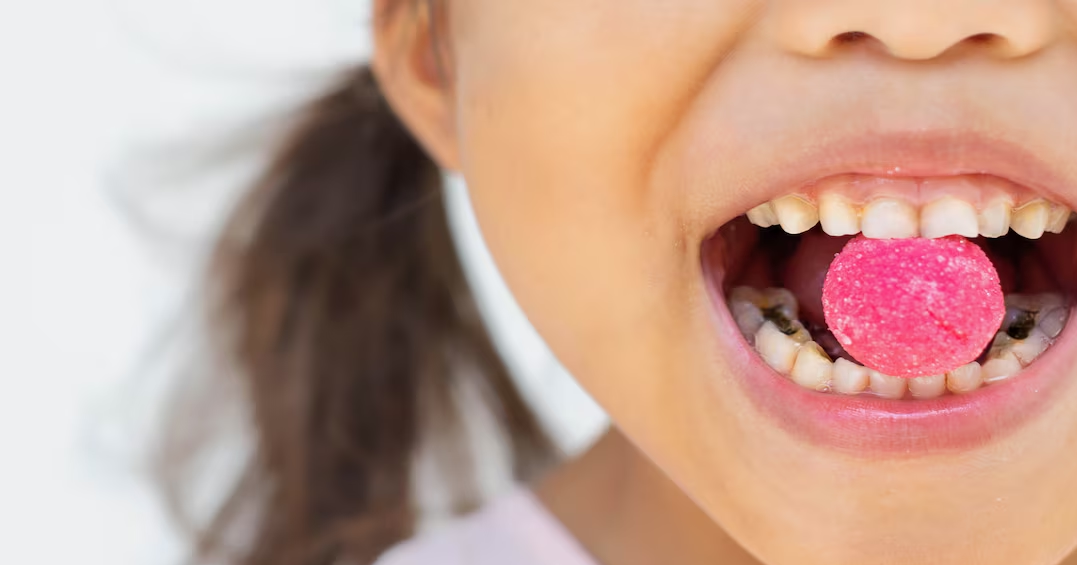Red No. 3, an artificial food coloring with links to cancer, will soon be banned by the U.S. Food and Drug Administration.
The substance, which is used in candy, frozen desserts and fruit juices, was already prohibited in cosmetics more than three decades ago after studies showed a link to tumors in lab rats. In recent years, a coalition of organizations pressured the FDA to expand the ban to food.
The cause received added attention when, in 2023, California said it would ban the dye by 2027. Companies have until January 2028 to stop using the dye.
Related:FDA bans red dye No. 3 from foods
D-FW Public Health Alerts
Get the latest public health updates.
So, what is Red No. 3?
Red No. 3 is a petroleum-based artificial food coloring that’s been used in a variety of products, spanning cough medicine to nutrition shakes. It’s banned in the European Union, except in cocktail cherries such as maraschinos.
A study from the early 1980s found that the dye caused thyroid tumors in 15 of 70 male rats that were fed the substance, but no tumors were found in female rats. While the FDA went on to ban its use in cosmetics, officials weren’t convinced the scientific evidence required the coloring to be removed from food.
What foods and products have Red No. 3?
Red No. 3 has been widely used in candy, including in marshmallow Peeps, Brach’s candy corn and sprinkles from Betty Crocker, a General Mills brand. It’s also in strawberry-flavored Ensure, a nutrition drink from Abbott Laboratories; heartburn pills sold at Costco and Rite Aid; a treatment for attention deficit hyperactivity disorder, Vyvanse, from Takeda Pharmaceutical; and some cough syrups.
 Just Born, which produces Peeps, said that the company no longer uses Red No. 3.(Haven Daley / AP)
Just Born, which produces Peeps, said that the company no longer uses Red No. 3.(Haven Daley / AP)
In all, about a quarter of baking decorations and dessert toppings have the dye, according to an analysis by GoCoCo, which makes a food-scanning app. It’s also found in 16% of chewing gum and mints, 13% of candy and 11% of cookies and biscuits. The dye appears on food labels as “Red No. 3” or sometimes “Red 3.”
Takeda, Costco and Rite Aid didn’t immediately respond to a request for comment. Before the FDA’s move, a spokesperson for General Mills had said that the company will be in compliance with California’s law. Ferrara, owner of Brach’s, has already begun reformulating products without the dye, a spokesperson said. Just Born, which produces Peeps, said that the company no longer uses Red No. 3. Abbott, which has flavors without the dye, said it’s working on removing it.
Why did the FDA ban Red No. 3 now?
Since Red No. 3 was banned in cosmetics in 1990, there’s been momentum to expand it to food, but those efforts failed. Some have blamed lobbying by the food industry, including the makers of maraschino cherries.
The Delaney Clause — part of the FDA’s Federal Food, Drug, and Cosmetic Act — requires the FDA to ban food additives, even small amounts, that are known to cause cancer. But the available scientific evidence hasn’t found that the dye has a direct link to causing cancer in humans. Yet studies that found cancer in rats were enough for the FDA to reconsider after being petitioned.
What other dyes are being scrutinized?
Red No. 40, which is also made from petroleum, is viewed as an alternative to its now-banned counterpart, but there are concerns about it as well. It’s been found to cause hyperactivity in children and to contain carcinogens including benzidine. There’s a bill to ban it before the Pennsylvania legislature.
Other dyes that states are scrutinizing include Yellow Nos. 5 and 6, Blue Nos. 1 and 2, and Green No. 3. Yellow Nos. 5 and 6 have also been found to be contaminated with benzidine or other carcinogens and to cause hyperactivity.
“Red 3 is the food dye with the clearest evidence of cancer, so it is the lowest hanging fruit of the synthetic dyes for a ban because of the Delaney Clause,” said Thomas Galligan, principal scientist for additives at the Center for Science in the Public Interest, in an email. “There are other concerns with the rest of the dyes, like Red 40 and Yellow 5, and we have been asking FDA to act on those as well for years,” he said.
How will companies replace the dye?
Besides Red No. 40, another alternative might be carmine, a natural red dye made from the ground Cochineal bug, which primarily lives in South and Central America. Humans have used the insect to dye garments and blankets since the 15th century.
But carmine has the potential to cause allergic reactions (and it’s not considered kosher), so the FDA requires the ingredient to be explicitly labeled on food. The dye’s producers include Danish food company Oterra and Peru’s Imbarex.
“This ban highlights the importance of educating the market about the benefits of natural colorants like carmine — not only in terms of safety but also sustainability and quality,” an Imbarex spokesperson said in a statement. The company’s product is used in sausages, yogurts, jams and candies.
Starbucks consumers may have consumed the bug dye early last decade. Strawberries-and-cream Frappuccino, raspberry swirl cakes and any pink concoction incorporated the dye until 2012 when a backlash from customers pushed the company to remove it.
There’s also good old beets and beetroot, which are used for coloring in natural food options.
By Jessica Nix, Bloomberg News
— With assistance from Deena Shanker and Anna Edney



